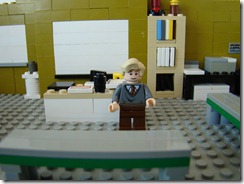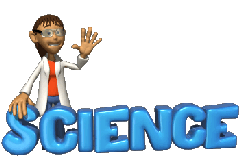Last Saturday I had the opportunity to attend the Western New York State Physics Teachers’ Alliance (WNYPTA) meeting at Buffalo State College from 8:30 am to noon. The meeting started with coffee, danishes, and some time to meet new colleagues, followed by a number of announcements such as the upcoming Physics Olympics and availability of whiteboarding crayons. Dr. Dan MacIsaac gave a brief presentation on whiteboarding the Edgar Rice Burroughs problem of gravity in the hole through the center of the Earth, and a discussion on cleaning and refurbishing whiteboards ensued.
 The main portion of the meeting consisted of a presentation on physics labs in physics instructor Larry Hiller’s classroom. In Hiller’s classroom, students take on the role of research team surrounding one of 12 different types of labs on any given unit. Lab types include:
The main portion of the meeting consisted of a presentation on physics labs in physics instructor Larry Hiller’s classroom. In Hiller’s classroom, students take on the role of research team surrounding one of 12 different types of labs on any given unit. Lab types include:
- Cooperative (lots of data to take, split up and each takes some data, pools it, see what they learn together).
- Gedanken (thought experiment) – a bit more theoretical, simulation, or make a simulation (program in Excel?)
- Project Proposals — suppose you want to study this big thing with this budget, put together a proposal, budget, staffing, timelines, etc.
- Discovery — subject matter is tangent to class material, their goal is to teach themselves something related
- Confirmation — Students prove to themselves something that has been discussed in class. (i.e. CERN sees something, Fermilab confirms).
- Competitive — Both partners have same object, but work separately trying to obtain a better answer.
- Technology — Fairly simple physics problem, but half of lab is learning how to use a tool. Write-up includes how to use the tool, how else it could be used, etc.
- Observation — Black Box-type things (figure out how this works)
- Procedure — Labs with slightly more detailed procedure (3-4 lines of objectives instead of 1 or 2), based on labs where students sometimes struggle.
- Challenge — Harder, meticulous, higher level thinking may be required.
- Research — Students must look up initial information, or look up some stuff to compare, at some point in the process they need information from another source.
For each lab, only a bare minimum of equipment and instruction is provided, with students building their own experimental procedure in order to solve the problem. A “measuring tools” cabinet is available in the classroom, where students can gather specific equipment they need to complete their labs. In some cases, they even build their own measuring equipment.
Labs typically last a week, with students spending the first day exploring the issue, then several days building their experiment, collecting and analyzing data, and writing up their findings in a formal lab notebook and sharing with the group in a whiteboarding session.
For each topic, roughly 20 different labs are available, providing students a wide variety of opportunities to differentiate with respect to lab type, interest, and current level of achievement. Throughout the year, students are required to perform at least one lab of each type.
 Hiller went over his lab report format and grading rubric, both of which appear straightforward, complete, concise, and simple to implement. Expectations for students are clear and consistent for the year, allowing students an opportunity to build their technical writing skills without getting lost in the minutia of word-processor formatting (although this could easily be adapted with a number of required “formal” lab reports in a high school classroom). The last page of each lab report has to be an essay, guided by which bin (category) the lab falls into.
Hiller went over his lab report format and grading rubric, both of which appear straightforward, complete, concise, and simple to implement. Expectations for students are clear and consistent for the year, allowing students an opportunity to build their technical writing skills without getting lost in the minutia of word-processor formatting (although this could easily be adapted with a number of required “formal” lab reports in a high school classroom). The last page of each lab report has to be an essay, guided by which bin (category) the lab falls into.
Given proper preparation, this appears to be a terrific way to run a lab course, focusing on student inquiry and exploration. The time commitment, at first glance, appears extensive, though I believe something similar to this could be implemented in a Regents Physics classroom with labs limited to 12 per year, and each lab running approximately 4 or 5 working periods of 42 minutes spread across 3 days.
Though I’m not in a position to change my lab strategy to this format during this school year, this presentation presented tons of good “food for thought” that will likely end up being integrated in my classroom over the next several years. Immediately, I see this as a great strategy for building up my arsenal of shoebox labs for students who aren’t able to sit in regular classes for a variety of reasons, and am especially excited about the possibility of moving toward a research team approach across all lab experiences in physics.
 Students have published the first Physics in Action podcast episode of season 3, featuring a look at physics in the Star Wars universe, a retro-styled look at Newton’s Laws of Motion, and an investigation into springs. You can subscribe for free through iTunes, or download directly from the APlusPhysics.com website. Great start to a new season, guys!
Students have published the first Physics in Action podcast episode of season 3, featuring a look at physics in the Star Wars universe, a retro-styled look at Newton’s Laws of Motion, and an investigation into springs. You can subscribe for free through iTunes, or download directly from the APlusPhysics.com website. Great start to a new season, guys!



